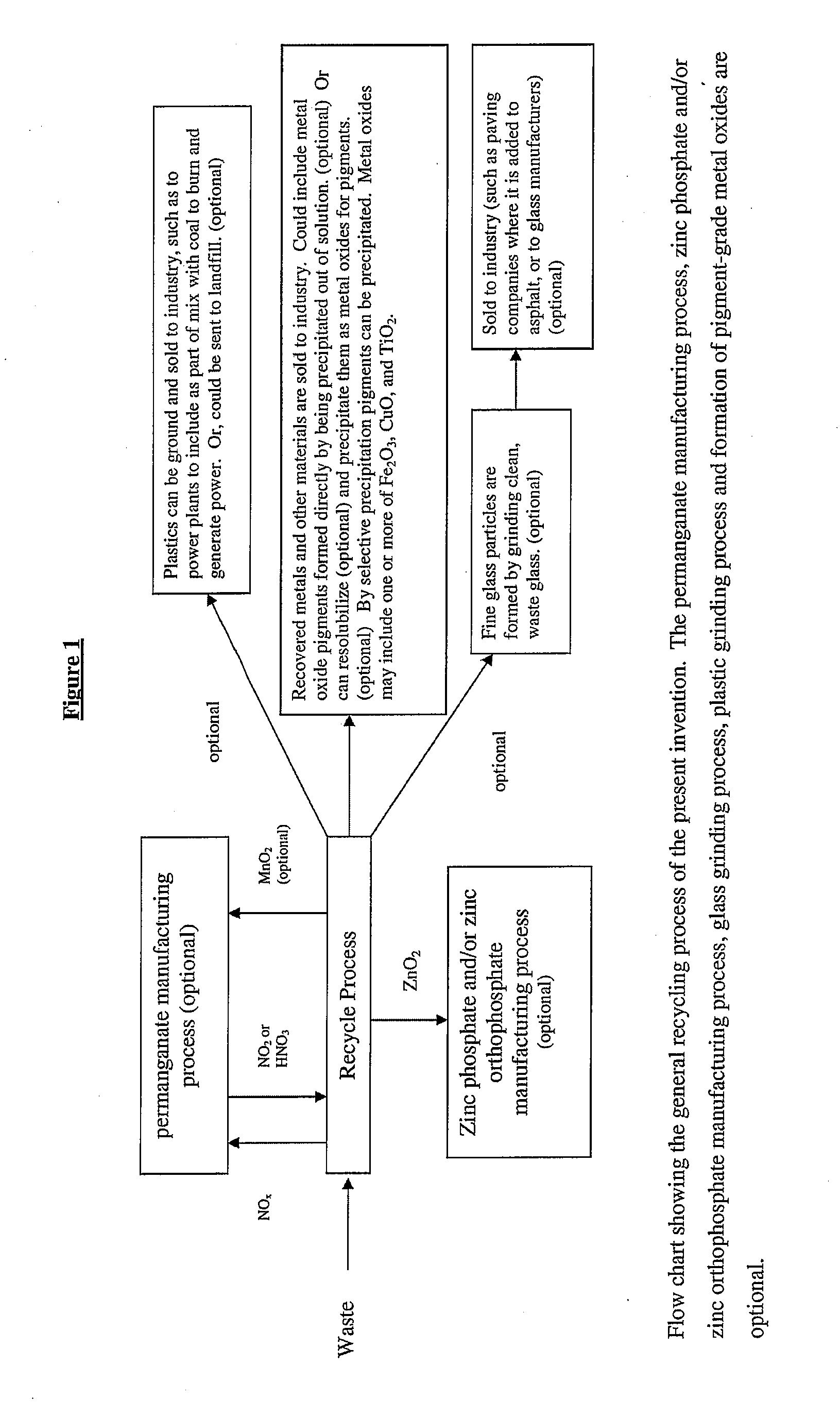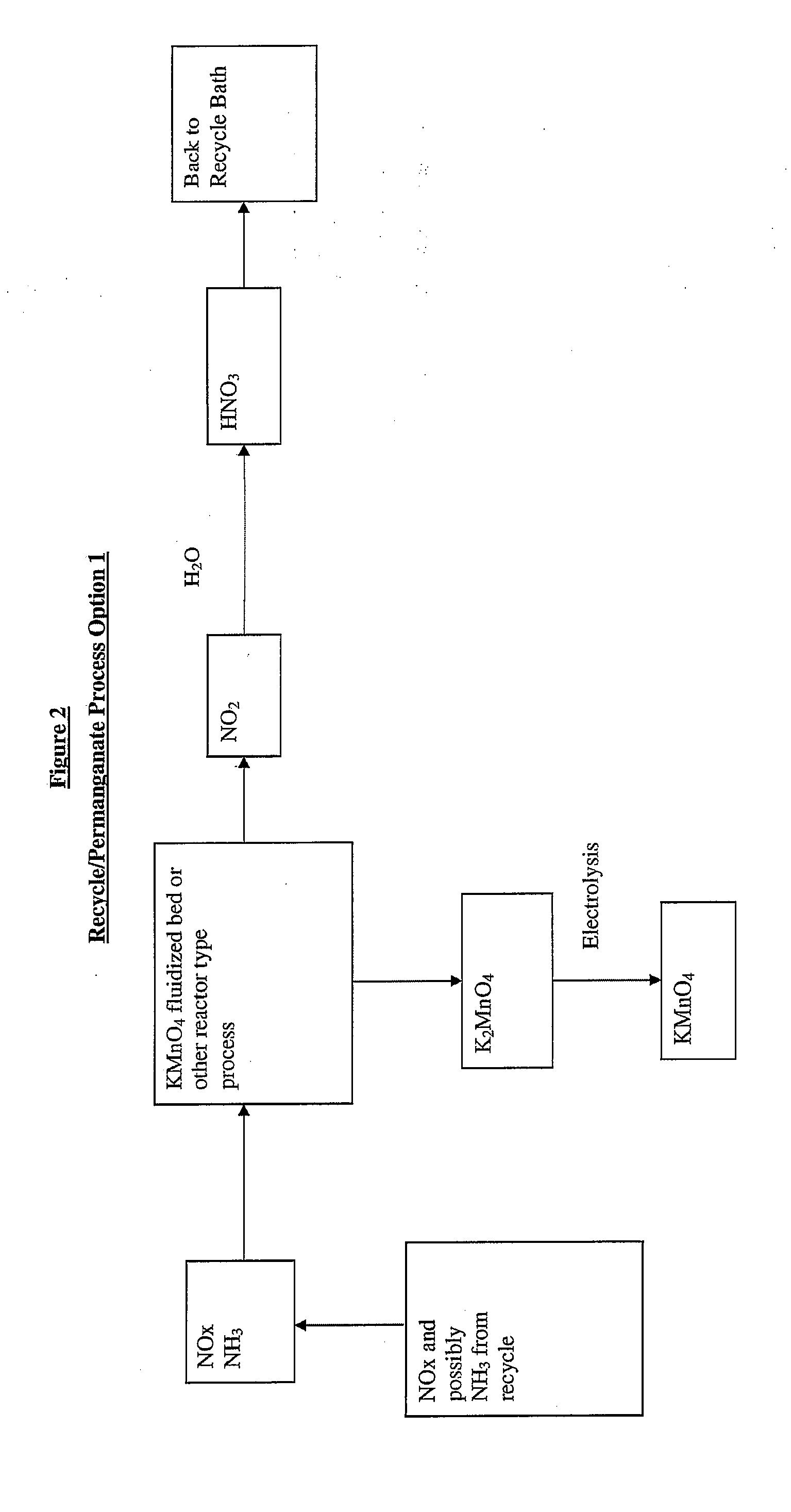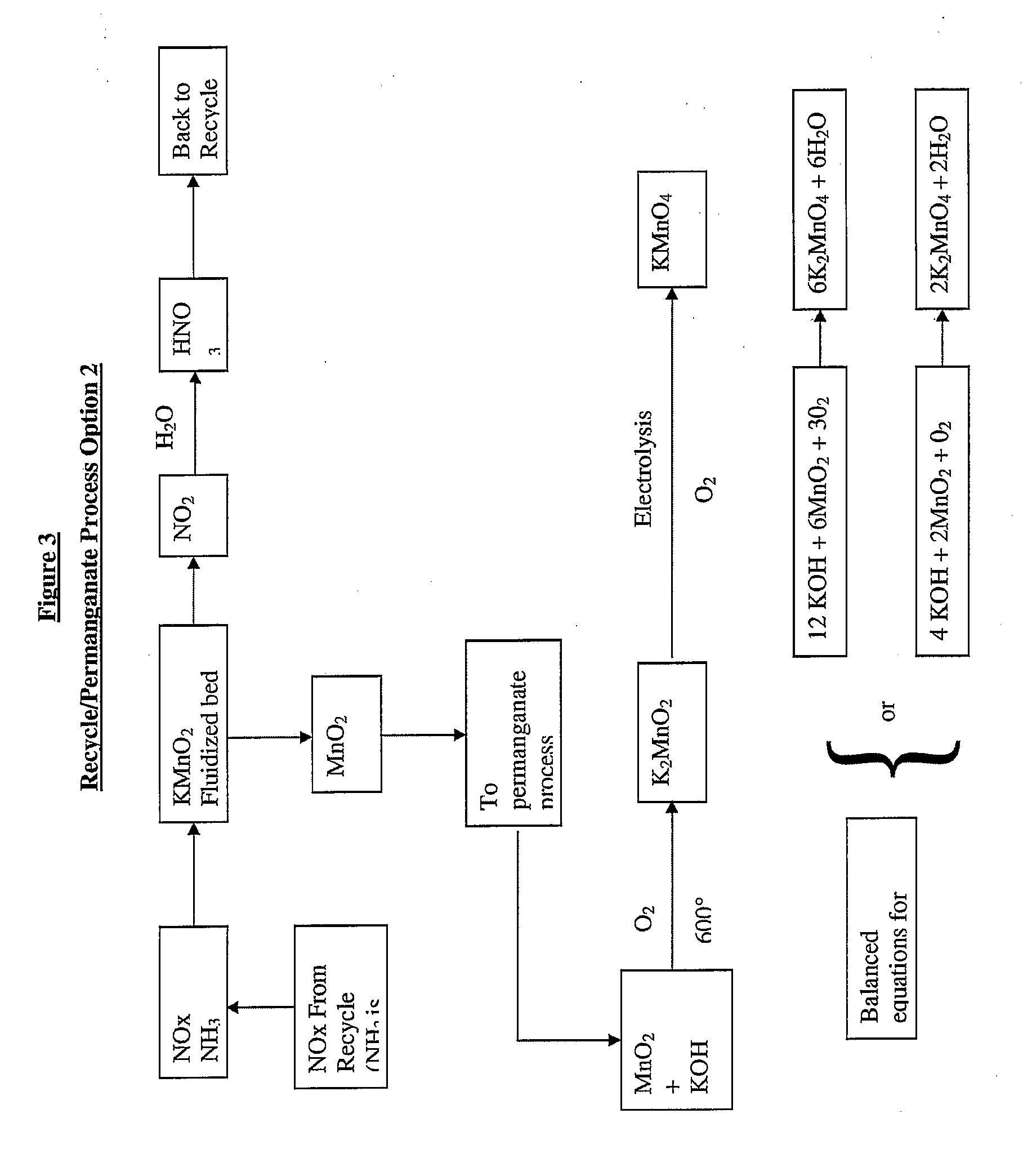Sustainable recovery of metal compounds
a metal compound and sustainable technology, applied in the direction of beryllium oxides/hydroxides, aluminum oxides/hydroxides, beryllium oxides/hydroxides, etc., can solve the problems of increasing inability to lawfully dispose of landfills, metal oxides, plastics, glass, etc., and achieves low cost and high purity.
- Summary
- Abstract
- Description
- Claims
- Application Information
AI Technical Summary
Benefits of technology
Problems solved by technology
Method used
Image
Examples
Embodiment Construction
[0025]Preparation of permangante from natural ore (pyrolusite) is described by the following equation: 2e−+02+Mn02------->Mn04=[K2MnO4]. Continuous electrolysis of K2MnO4 is described by the following equation: 2[K2MnO4]+2H20------->2[KMnO4]+KOH+H2, wherein permanganate is produced at the anode. If we examine the electrolysis reaction and assume the reaction can be conducted in molten KOH then it may be possible to electrowin zinc metal at the cathode.
[0026]This invention can be extended to sodium permanganate by the use of NaOH to increase the pH of the bath.
[0027]In the nitric recycle, it is desirable to capture the nitrous oxide gas produced when organic material, any metal (the most commonly found in e-waste; copper, silver, lead, iron, gold, platinum, nickel, or tin) react. Nitrous oxide (NOx) is industrially oxidized to NO2 via the Ostwald process. The Oswald process is normally fed with ammonia (NH3) and uses Pt / Rd catalyst and thermal reaction to generate ultimately NO2, whi...
PUM
| Property | Measurement | Unit |
|---|---|---|
| soluble | aaaaa | aaaaa |
| pH | aaaaa | aaaaa |
| nitric acid | aaaaa | aaaaa |
Abstract
Description
Claims
Application Information
 Login to View More
Login to View More - R&D
- Intellectual Property
- Life Sciences
- Materials
- Tech Scout
- Unparalleled Data Quality
- Higher Quality Content
- 60% Fewer Hallucinations
Browse by: Latest US Patents, China's latest patents, Technical Efficacy Thesaurus, Application Domain, Technology Topic, Popular Technical Reports.
© 2025 PatSnap. All rights reserved.Legal|Privacy policy|Modern Slavery Act Transparency Statement|Sitemap|About US| Contact US: help@patsnap.com



